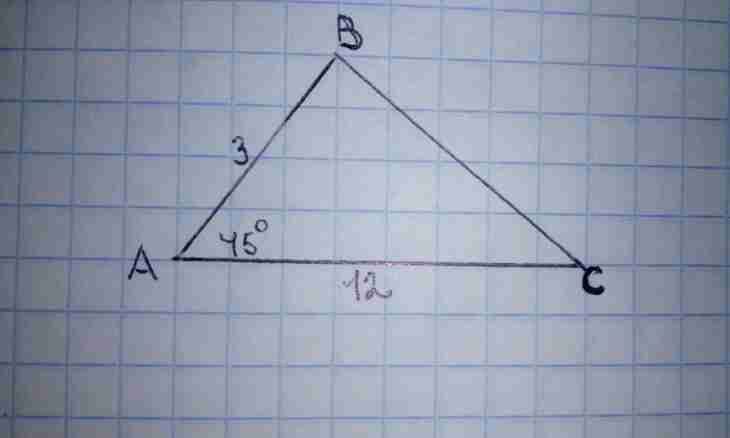The triangle is the simplest of polygonal flat figures which can be set by means of coordinates of points in tops of its corners. The plane land area which will be limited to the parties of this figure in the Cartesian system of coordinates can be calculated in several ways.
Instruction
1. If coordinates of tops of a triangle are given in two-dimensional Cartesian space, then at first make a matrix of differences of values of coordinates of the points lying in tops. Then use determinant of the second order for the received matrix - it will be equal to the vector work of two vectors making the parties of a triangle. If to designate coordinates of tops as A (X ₁, Y ₁), B (X ₂, Y ₂) and C (X ₃, Y ₃), then the formula of the area of a triangle can be written down so: S= | (X -X ₃) • (Y -Y ₃)-(X -X ₃) • (Y -Y ₃) |/2.
2. For example, let such coordinates of tops of a triangle on the two-dimensional plane are given: A(-2, 2), B(3, 3) and C (5,-2). Then, having substituted numerical values of variables in the formula given on the previous step, you receive: S= | (-2-5) • (3-(-2)) - ((3-5)·2-(-2)) |/2=|-7•5-(-2) • 4 |/2= |-35+8 |/2=27/2=13.5 centimeters.
3. It is possible to work in a different way - at first to calculate lengths of all parties, and then to use Heron's formula which determines the area of a triangle through lengths of its parties. In this case at first find lengths of the parties, using Pythagorean theorem for the rectangular triangle made of the party (hypotenuse) and projections of each party to axes of coordinates (legs). If to designate coordinates of tops as A (X ₁, Y ₁), B (X ₂, Y ₂) and C (X ₃, Y ₃), then lengths of the parties will be the following: AB= √ ((X -X ₂)²+ (Y -Y ₂)²), BC= √ ((X -X ₃)²+ (Y -Y ₃)²), CA= √ ((X -X ₁)²+ (Y -Y ₁)²). For example, for coordinates of the tops of a triangle given on the second step, these lengths will be AB= √ ((-2-3)²+ (2-3)²)= √ ((-5)²+ (-1)²)= √ (25+1) ≈5.1, BC= √ (3-5)²+ (3-(-2))²)= √ ((-2)²) +5²)= √ (4+25) ≈5.36, CA= √ (5-(-2))²+ (-2-2)²)= √ (7²+ (-4)²)= √ (49+16) ≈8.06.
4. Find poluperimetr, having put lengths of the parties known now and having divided result into the two: p=0.5 • (√ ((X -X ₂)²+ (Y -Y ₂)²)+ √ ((X -X ₃)²+ (Y -Y ₃)²)+ √ ((X -X ₁)²+ (Y -Y ₁)²)). For example, for lengths of the parties calculated on the previous step poluperimetr p ≈ (5.1+5.36+8.06)/2≈9.26 will be approximately equal.
5. Calculate the area of a triangle by Heron's formula S= √ (p (PAB) (p-BC) (p-CA)). For example, for a sample from the previous steps: S= √ (9.26 • (9.26-5.1) • (9.26-5.36)·(9.26-8.06))= √ (9,26•4,16•3,9•1,2) 180,28≈13,42. As you can see, the result on eight 100-th differs from received on the second step is a result of the roundings used when calculating on the third, fourth and fifth steps.

